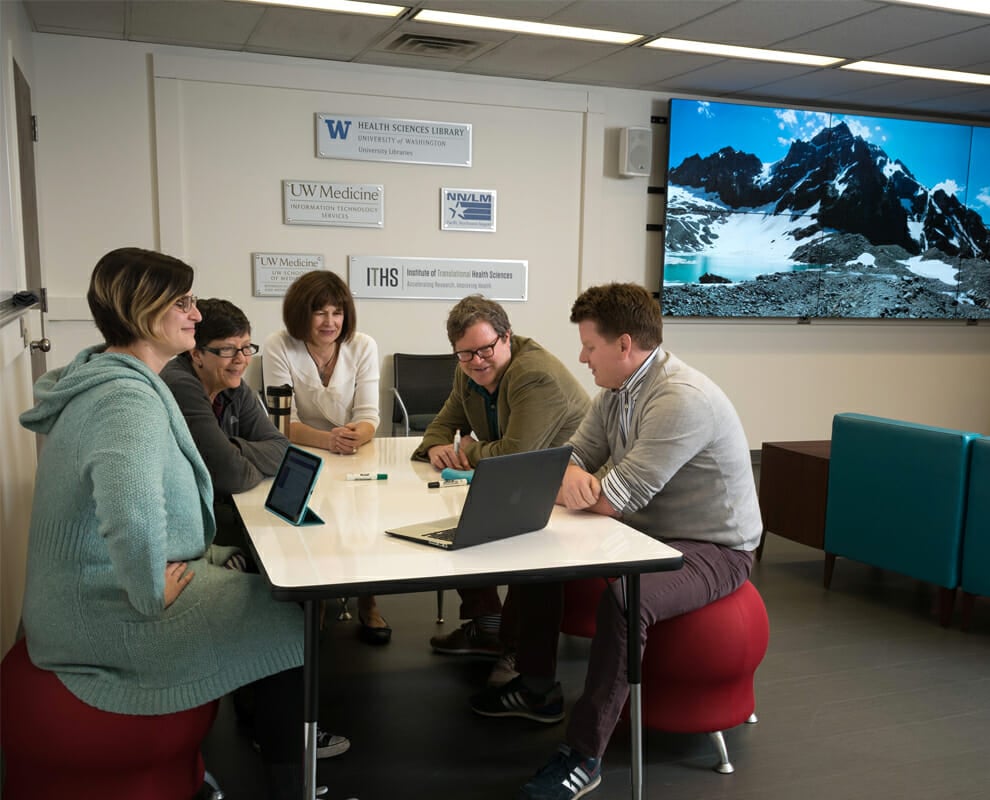On an increasing number of university campuses, video wall technology is helping administrators find new, exciting ways to connect with students. The Health Sciences Library at the University of Washington seeks to advance healthcare studies through scholarship, research, education and access to information. It supports not just University faculty, researchers and students, but also a variety of other health professionals, libraries and researchers.
The Library sought to create a space on campus that would accelerate health research and innovation by supporting researchers and investigators and allowing a multifaceted approach to research. As such, the University engaged Diversified to design and install a video wall for the Library’s Translational Research and Information Lab (TRAIL). They decided on a 2 x 3 video wall comprising 55-inch displays, to help clinical researchers analyze and visualize data, and give them the ability to send six different sources, from various devices, to any or all the displays.
“When you’re collecting large data sets [to] have as many subjects and data sets as possible, as a lot of health science researchers do, it’s helpful to have multiple screens to visualize and look at the data,” said Sally Pine, special project librarian for the University.
To enable system control, Diversified added a color touch panel enabling users to choose from three different display configurations: the (4) left displays as one image; the (4) left displays as one image and (2) right displays each with different input; all (6) displays with different inputs simultaneously. The touch panel includes automation control so TRAIL room administrators can set times for the video wall to automatically power off if left running.
Emily Patridge commented that the video wall has sparked interest across the campus: “We have other digital signage on campus, but typically it’s used more traditionally for displaying events and in student lounge areas.” He adds, “It’s kind of cool that we took the same product and transformed it into something researchers can use for data visualization and 3-D imaging projects. It’s been a really big success.”



